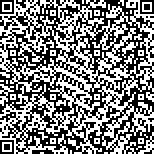范成雷,初晓,王开乐,王琳,牛镇远,李铁山.A型肉毒毒素关节腔注射对佐剂性关节炎疼痛大鼠背根神经节中降钙素基因相关肽表达的影响[J].中华物理医学与康复杂志,2016,38(9):652-658
扫码阅读全文

|
| A型肉毒毒素关节腔注射对佐剂性关节炎疼痛大鼠背根神经节中降钙素基因相关肽表达的影响 |
|
| |
| DOI: |
| 中文关键词: A型肉毒毒素 关节炎疼痛 降钙素基因相关肽 背根神经节 逆向轴浆运输 |
| 英文关键词: Botulinum toxin type A Arthritis Pain Calcitonin gene-related peptide Dorsal root ganglia Retrograde axonal transport |
| 基金项目: |
|
| 摘要点击次数: 2444 |
| 全文下载次数: 3559 |
| 中文摘要: |
| 目的观察A型肉毒毒素(BoNT-A)关节腔注射对佐剂性关节炎疼痛大鼠镇痛效果与背根神经节(DRG)中降钙素基因相关肽(CGRP)表达的关系,并检测其逆向轴浆运输的情况。 方法SD大鼠90只按随机数字表法分为A、B、C、D和E五组,每组18只大鼠。分组后A组注射50μL生理盐水作为对照组,而B、C、D、E组大鼠左后肢踝关节腔注射50μL完全弗氏佐剂(CFA)建立佐剂性关节炎疼痛模型作为模型组。建模3周关节炎疼痛模型逐渐稳定后,A组和B组大鼠关节腔内注射20μL生理盐水,而C、D和E组大鼠关节腔内注射不同剂量20μL的BoNT-A,即A组为对照组+关节腔内注射20μL生理盐水;B组为模型组+关节腔内注射20μL生理盐水;C组为模型组+关节腔内注射1U的20μL BoNT-A;D组为模型组+关节腔内注射3U的20μL BoNT-A;E组为模型组+关节腔内注射10U的20μL BoNT-A 。分别于造模前、造模后1、5、14和21d和给药后1、3、5和14d,对各组大鼠进行机械痛阈和肌力评分测试;应用免疫印迹和免疫荧光法观察DRG中CGRP蛋白表达水平和阳性细胞数变化,以及观察BoNT-A的水解产物裂解的突出相关蛋白-25kDa(cl-SNAP-25)是否存在于DRG中。 结果与A组相比,B、C、D、E组大鼠的机械痛阈值和肌力评分均显著降低(P<0.001),大鼠DRG中的CGRP蛋白表达水平和阳性细胞数均显著增加(P<0.001);与B组相比,BoNT-A注射5d后D组和E组大鼠的机械痛阈显著提高(P<0.001),而14d后C组的机械痛阈亦显著提高(P<0.01);BoNT-A注射3d后,D组和E组大鼠DRG中的CGRP蛋白表达水平和阳性细胞数显著降低(P<0.01),C组14d后DRG中的CGRP蛋白表达水平和阳性细胞数显著降低(P<0.01);D组与E组相比,机械痛阈、CGRP蛋白表达水平和阳性细胞数组间差异均无统计学意义(P>0.05);与B组相比,C组和D组肌力评分组间差异均无统计学意义(P>0.05);E组BoNT-A注射5d后,肌力评分显著下降(P<0.001);免疫荧光检测到DRG中存在cl-SNAP-25。 结论BoNT-A通过减少DRG中CGRP的表达,减轻关节炎疼痛且存在剂量依赖性;BoNT-A可以通过逆向轴浆运输到达DRG。 |
| 英文摘要: |
| Objective To explore the analgesic effect of intra-articular botulinum neurotoxin type A (BoNT-A) injection in rats with adjuvant-arthritis pain, to quantify the expression of calcitonin gene-related peptide (CGRP) in the dorsal root ganglia (DRG) associated with arthritis pain, and to investigate the retrograde axonal transport of BoNT-A into the DRG after peripheral injection. MethodsNinety Sprague-Dawley rats were randomly divided into groups A, B, C, D and E, each of 18. A murine model of adjuvant-arthritis pain was established by injecting 50 μL of complete Freund′s adjuvant into the left ankle in all the mice except those in group A. The control group A was treated with intra-articular injection of 50 μL of saline solution. Three weeks later, groups A and B were treated with a 20 μL intra-articular saline injection, while groups C, D and E received an intra-articular injection of BoNT-A at 1 U/20 μL, 3 U/20 μL or 10 U/20 μL respectively. Pain threshold and muscle strength were graded before and 1, 5, 15 and 21 days after the modelling, as well as at 1, 3, 5 and 14 days after the BoNT-A treatments. Protein expression and the CGRP-positive cell number were observed, as well as any BoNT-A-cleaved synaptosomal-associated 25 kDa protein (cl-SNAP-25) in the DRG using Western blotting and immunofluorescence. ResultsCompared with group A, there was a significant decrease in the average mechanical withdrawal threshold and muscle strength and a significant increase in the protein expression and the CGRP-positive cell number in the other 4 groups. Compared with group B, the mechanical withdrawal threshold had increased significantly more in groups D and E at 5 days after the BoNT-A injection and in group C at 14 days after the treatment. Compared with group B, the protein expression and the number of CGRP-positive cells were significantly lower in groups D and E at 3 days after the BoNT-A injection. The decrease in group C was significant after 14 days. No significant differences were found between groups D and E in any measurement at any time point. There was no significant difference among groups B, C and D in terms of muscle strength. Five days after the BoNT-A injection, significantly decreased muscle strength was observed in group E. In addition, BoNT-A cleaved-SNAP-25 was detected in the DRG. ConclusionBoNT-A can reduce arthritis pain through inhibiting the expression of CGRP in the DRG. Its analgesic effect has a dose response. A peripheral injection of BoNT-A can arrive at the DRG through retrograde axonal transport. |
|
查看全文
查看/发表评论 下载PDF阅读器 |
| 关闭 |
|
|
|